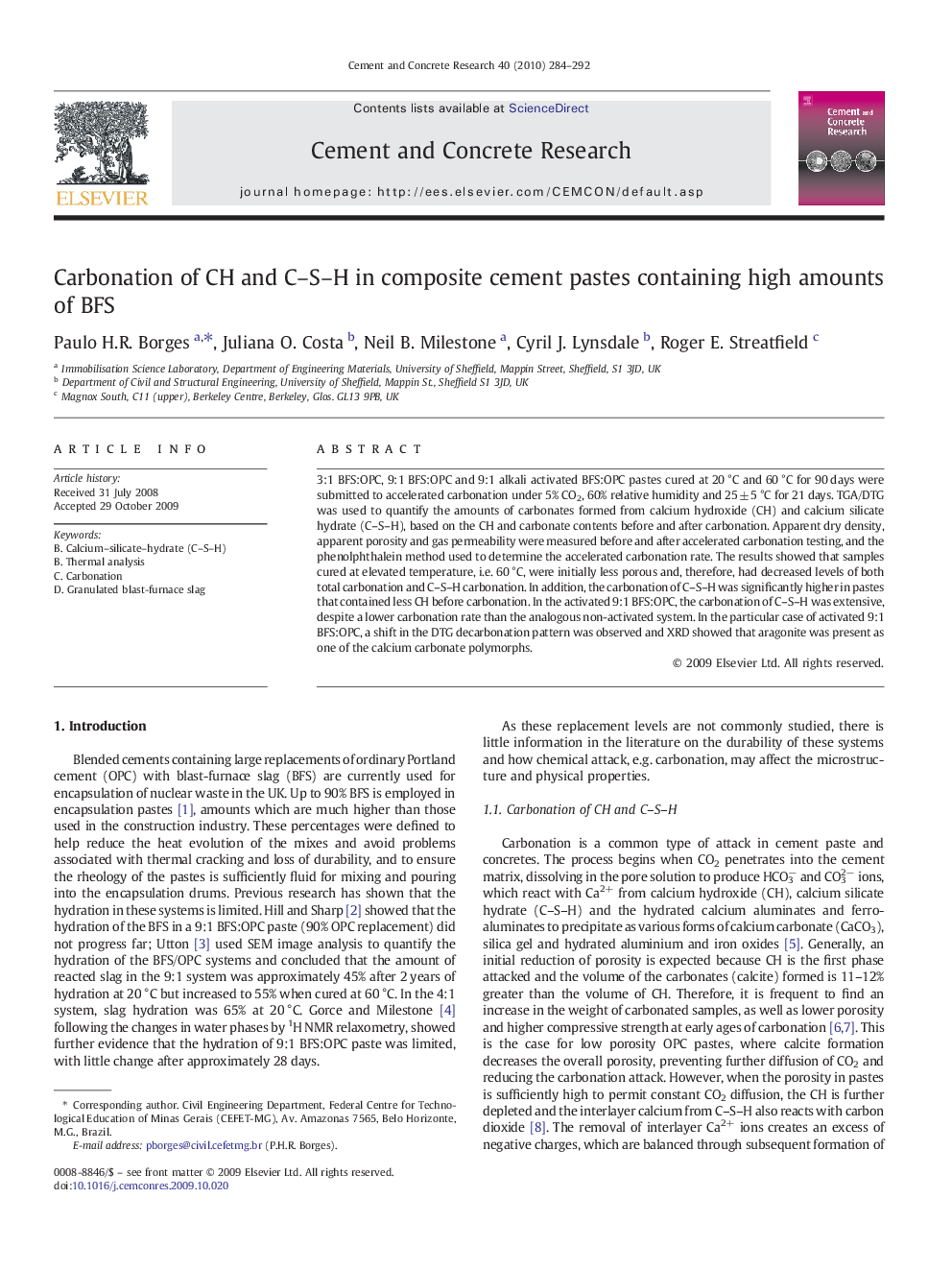| Article ID | Journal | Published Year | Pages | File Type |
|---|---|---|---|---|
| 1457167 | Cement and Concrete Research | 2010 | 9 Pages |
3:1 BFS:OPC, 9:1 BFS:OPC and 9:1 alkali activated BFS:OPC pastes cured at 20 °C and 60 °C for 90 days were submitted to accelerated carbonation under 5% CO2, 60% relative humidity and 25 ± 5 °C for 21 days. TGA/DTG was used to quantify the amounts of carbonates formed from calcium hydroxide (CH) and calcium silicate hydrate (C–S–H), based on the CH and carbonate contents before and after carbonation. Apparent dry density, apparent porosity and gas permeability were measured before and after accelerated carbonation testing, and the phenolphthalein method used to determine the accelerated carbonation rate. The results showed that samples cured at elevated temperature, i.e. 60 °C, were initially less porous and, therefore, had decreased levels of both total carbonation and C–S–H carbonation. In addition, the carbonation of C–S–H was significantly higher in pastes that contained less CH before carbonation. In the activated 9:1 BFS:OPC, the carbonation of C–S–H was extensive, despite a lower carbonation rate than the analogous non-activated system. In the particular case of activated 9:1 BFS:OPC, a shift in the DTG decarbonation pattern was observed and XRD showed that aragonite was present as one of the calcium carbonate polymorphs.
